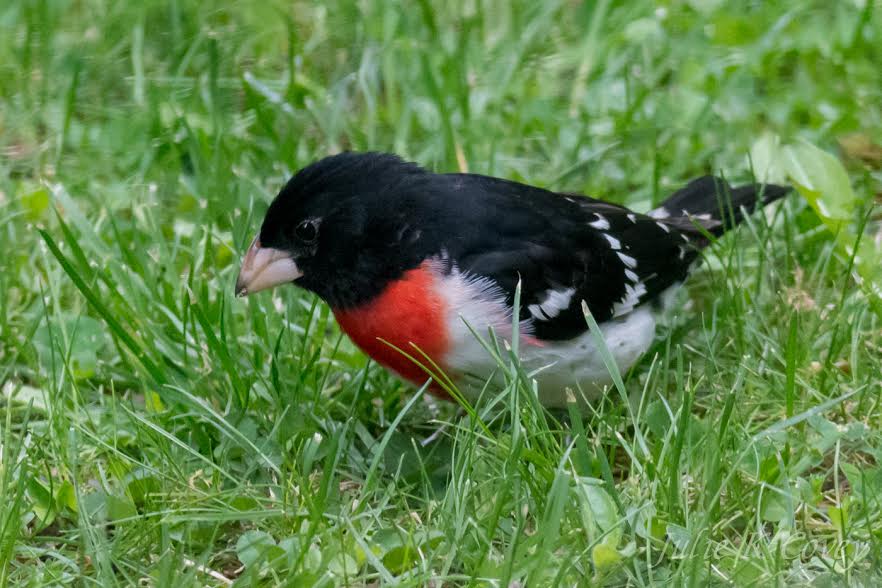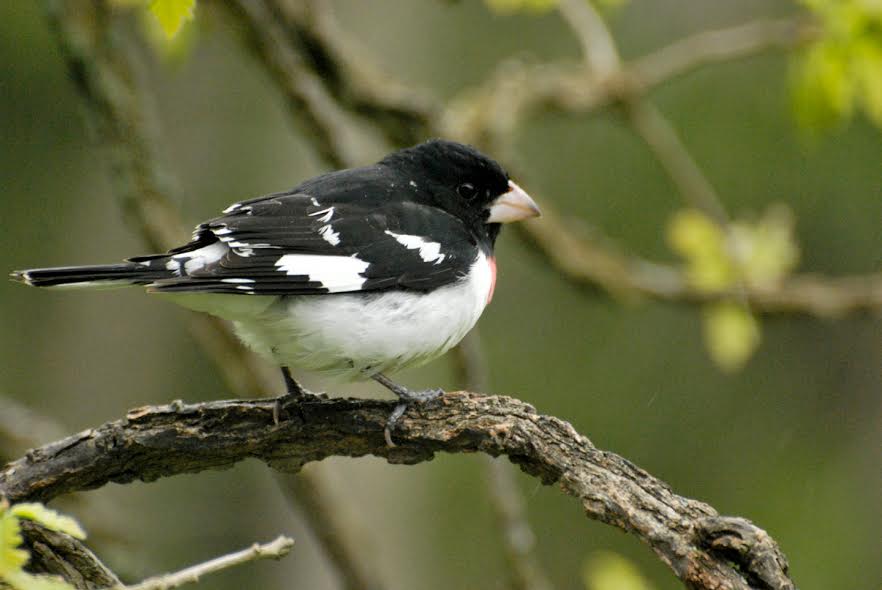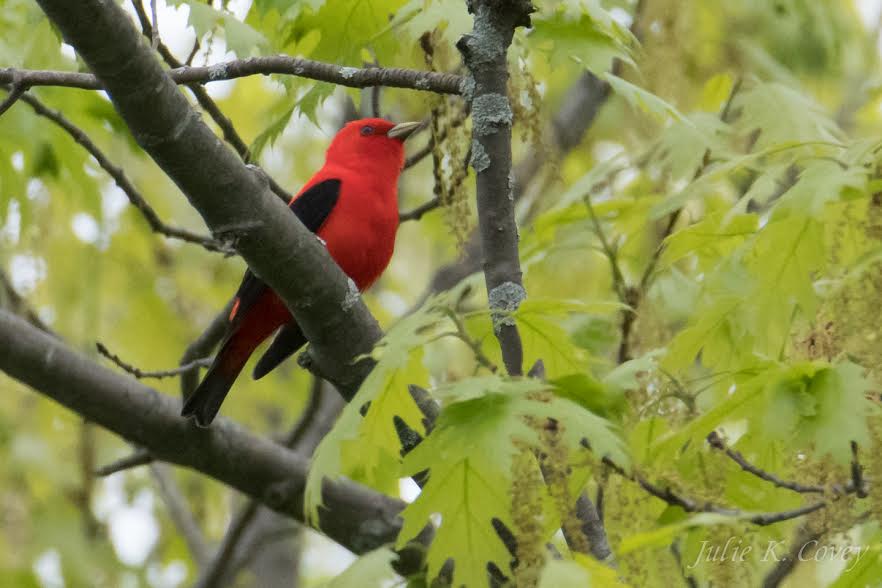This article is dedicated to Ken Deedy, the visionary conservationist to whom the songbirds owe a debt of gratitude. They are unable to thank him, but all of us who can, do.” Sherri Leigh Smith
It’s a short, dangerous, and intense life for most small animals. Generally, the smaller you are, the more likely you will end life as a meal for some larger critter. Small rodents, particularly mice and voles, are excellent examples of living brief lives where reproduction to maintain the species is a high biological priority. Small birds also have similar life cycles with most living an average of five years or less. Thus, successful reproductive activities are a critical part of the lives of our songbirds. For migratory species, suitable habitat availability on breeding and wintering grounds, as well as stops along the way are critical to their life cycle.
Migrant birds that travel twice annually between temperate North America and the New World Tropics have always faced many natural dangers. In addition to predators, storms (particularly hurricanes), have often killed large numbers of travelers. In addition to natural mortality, we humans have created many anthropogenic threats during the last two centuries. Tall structures, cats, invasive species, oil spills and pits, and road kill are but only a few of the threats we are responsible for. Being a small migrant bird has only become more problematic in the era of the Anthropocene.
Potentially the greatest current threat that all migrants face is habitat loss. The 19th and 20th century’s destruction of North American forests, prairies, and wetlands has had catastrophic population impacts. While these continue, the deforestation of tropical lands has grown at an alarming rate in the last seventy-five years. Combined with losses of staging areas, where avian travelers rest and recuperate, the situation becomes ever more perilous for many species. Nineteenth century ornithologist George B. Grinnell was once asked, “What can we do for the birds?” His reply, “Give them a place to live.”

Providing quality habitat for migrant birds, at all stages of their life cycle, is critical to their survival. Some thirty years ago, the then young Thousand Island Land Trust, under the visionary leadership of Ken Deedy, took an important step in that process. I was then the land steward for the Nature Conservancy in our region at that time. Ken contacted me, on behalf of TILT, wondering if I could find field birders who could document the avifauna of the large forested area at the foot of Grindstone Island. This area along the southeastern part of the island was under threat from possible logging or other development and needed protection.
I had been associated with Onondaga Audubon (OAS) out of Syracuse since I was a teenager. The OAS service area now includes Jefferson County and for many years folks had been interested in the River. We rounded up an eclectic group of competent field people and for the month of June during the next three summers, Ken hosted birders. Since people conducting breeding bird surveys are active well before dawn, Ken’s tolerance of all these folks in close quarters at his camp is a tribute to his dedication to the cause.

This effort proved wildly successful in documenting the variety and numbers of Neotropical migrant breeding birds present in the forest. Named the “Songbird Forest” by Ken, this area of relatively mature mixed woodland proved to have a great diversity of breeding birds. Species such as American Redstart, Eastern Wood-Pewee and Ovenbird were Common. All three are indicators of a healthy northeastern forest. Less common species, such as Scarlet Tanager, Rose-breasted Grosbeak, Wood Thrush and Veery, were well represented, indicating a diverse and healthy migrant avifauna. When combined with resident birds present, the survey data clearly suggested the area deserved conservation protection.
Of particular significance was the small population of Cerulean Warbler discovered by the observers. Previously unknown locally as a breeder, this beautiful little warbler is quite uncommon in northern New York and Southern Ontario. It reaches the species northern range limit here.
A denizen of the tree tops in the canopy of maturing forest, Cerulean Warblers have declined range-wide noticeably since the 1960s. This population reduction is of great concern to the conservation community, including potential agency funders. Cerulean Warbler became the charismatic virtual flag bearer for protection of the Songbird Forest and all who reside there. Ken and TILT, armed with good scientific data, then went into action.
The rest, as they say, is history; the Songbird Forest was preserved. The first purchase of 217+ acres occurred in 1995 with the help of a National Fish and Wildlife Foundation Grant. This parcel was obtained as part of a bargain sale at below value from the Heinemann family. The late Andrew Heinemann was a knowledgeable lifelong birder, familiar with the birds of our region. Since the anchor parcel purchase, another approximately 26 acres owned by Ken Deedy has been gifted as a conservation easement. These efforts assure a summer home will remain intact for songbirds nesting here. Better yet, the two-mile nature trail present allows us humans easy access to listen to the symphony coming from the early summer forest.
Many forest interior songbirds are specialists, occupying relatively narrow ecological niches. Such birds are at far greater conservation risk than generalist species, such as American Robin or Black-capped Chickadee. For specialists, species bigger is better, thus the more suitable habitat within a region the greater the benefit to these birds. Along the western periphery of the St. Lawrence River, islands provide high quality forested habitat generally lacking on the more agricultural mainland. Permanent protection and conservation management of these forests fills critical needs in the life cycle of species using them.

Fortunately, for the forest birds of the St Lawrence, TILT continues protecting more high-quality breeding and migration staging habitat. Ongoing conservation efforts include successful protection of Picton Island and Murray Isle. These efforts are ever enhancing the value of our region to birds and other wildlife. This type of landscape-scale conservation is essential to secure a future for migratory birds, particularly songbirds. Because of these efforts, future generations of Cerulean Warbler and Scarlet Tanagers will find a refuge in a dangerous world. While we can’t and shouldn’t provide protection from natural predators we should, can, and must, provide them with a place to breed.
By Sherri Leigh Smith, photos by Julie Covey
Sherri Leigh Smith is a senior Ornithologist, Avian Ecologist and Conservationist working to Preserve bird populations in Northern New York.
Editor’s Note: This editor is both pleased and appreciative to Sherri Leigh Smith for taking the time to help us understand more about nature in the islands. You can read his past articles here.
Posted in: Volume 13, Issue 8, August 2018, Nature
Please click here if you are unable to post your comment.
